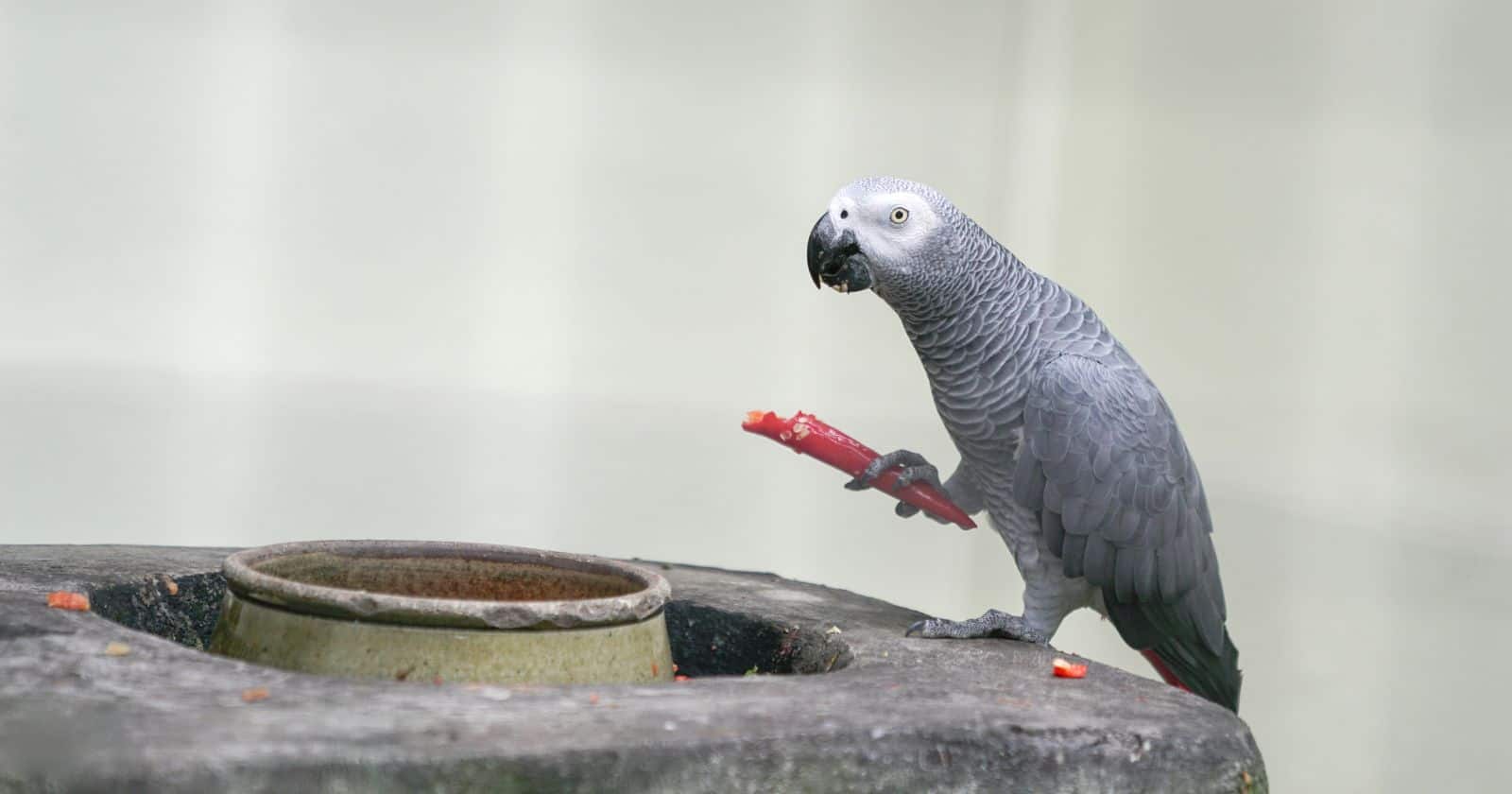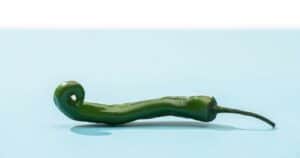If you’ve ever seen birds gobbling down spicy peppers without flinching, you may have wondered: can birds taste
While capsaicin makes our mouths burn, birds lack the specific pain receptors triggered by this compound. So they enjoy the nutrients in hot peppers without oral discomfort. Their evolutionary adaptation allows birds to handle the heat and spread seeds to propagate more chili plants.
This article explores the science behind avian taste, the benefits of spicy bird food, and tips for safely adding flavor to your feathered friends’ diet. Join us on this spicy journey into the capacities of the bird palate!
Why Birds Can Withstand the Spice
Birds can handle spicy birdseed and peppers because their taste receptors perceive
The Capsaicin Effect
Capsaicin binds to a receptor called TRPV1 in human mouths. This receptor detects heat and pain, alerting the brain that something spicy has been consumed. Birds do not possess TRPV1 receptors, making them immune to the fiery burn of capsaicin.
Helpful Adaptation
This adaptation allows birds to enjoy nutrient-rich hot peppers without oral discomfort. Peppers contain important vitamins and antioxidants useful for avian health and reproduction. By dispersing seeds unharmed by
Mutually Beneficial Relationship
The relationship between birds and peppers is mutually beneficial. Birds spread seeds contained in pepper pods after eating the fruits. In return, the chili plants provide birds with necessary nutrients and vitamins. This explains why wild birds are commonly seen snacking on backyard pepper plants!
Do Birds Have a Sense of Smell?
When considering birds’ taste for
Though less developed than their sight and hearing, birds rely on smell to:
- Locate food sources like seeds, fruit, and prey
- Identify safe nesting spots free of predators
- Establish social connections via chemical signals like pheromones
- Avoid spoiled or toxic foods
Like their taste receptors, birds have fewer olfactory bulb receptors compared to humans. But they can still detect and discriminate between scents, especially when odors are strong.
So while birds lack the TRPV1 receptor to taste the pungent heat of capsaicin, their sense of smell likely alerts them to the enticing aromas of plants like peppers and chilies. Scent combined with innate immunity to capsaicin makes hot peppers an appetizing treat for many avian species.
The Benefits of Spicy Food for Feathered Friends
Adding a dash of
Improved Feather Quality
The vibrant red color of hot chili peppers indicates the presence of carotenoids. These plant pigments act as antioxidants and convert to vitamin A in birds. Vitamin A supports feather growth and quality. Birds with diets low in vitamin A may suffer from dull, brittle feathers prone to breakage. Spicy peppers can provide the nutrient boost needed for thick, shiny plumage.
Immunity Support
In addition to carotenoids, hot peppers contain vitamins C and E. These antioxidants help clean up cell-damaging free radicals in avian bodies. Research shows antioxidant-rich foods strengthen immune response in birds. A diet containing spicy peppers may help your feathered friends fight illness and stay healthy.
Pain Relief
While science has yet to confirm similar effects in birds, capsaicin has been found to reduce pain in mammals by interfering with pain signal transmission. It is possible birds experience a mild numbing or pain relief from consuming spicy peppers. This may aid recovery from injury or illness.
Seed Dispersal
As mentioned, birds help scatter the seeds of wild chili plants after consuming peppers. The seeds remain intact as they pass through avian digestive systems. This aids plant propagation and provides more opportunities for birds to access vitamin-rich fruits. It’s a win-win situation!
Choosing the Right Hot Peppers for Your Flock
While birds are not sensitive to capsaicin, not all like the flavor of spicy foods. It is best to start slowly when introducing hot peppers. Here are some fiery fruits to tempt your feathered friends:
- Cayenne – A popular pepper for deterring squirrels from bird feeders. Cayenne rates 30,000-50,000 on the Scoville scale, delivering a moderately spicy kick.
- Thai Chili – Also called bird’s eye chili, this tiny pepper packs big flavor, rating 50,000-100,000 Scoville units. It is a favorite of wild birds.
- Chili de Arbol – Long and thin, these hot peppers rate 15,000-30,000 on the Scoville scale. They provide mild-to-moderate
spice . - Jalapeno – With a Scoville rating of 2,500-10,000 units, jalapenos offer mild but flavorful
spice . The thick flesh makes them easy for birds to handle.
Start with milder varieties and closely observe bird reactions before introducing peppers with more intense heat like habanero.
Feeding Hot Peppers to Birds Safely
It’s important to exercise caution when offering spicy foods to backyard birds. Check out these tips for safely incorporating hot peppers into your bird menu:
- Purchase fresh, high-quality peppers free of mold, damage, or spoilage. Rinse thoroughly before use.
- Avoid heavily dusted
spice blends as birds can inhale irritating particles. Instead, stick to whole dried peppers. - Dice or crush peppers into small pieces for easier consumption. Birds do not like large chunks.
- Mix with standard birdseed or suet. Start with small amounts and increase slowly while gauging bird interest.
- Monitor bird feeding behavior. Discontinue spicy offerings if birds show signs of distress like wheezing or irritation.
- Offer plain water to allow birds to cool their mouths if desired.
- Wash hands thoroughly after handling hot peppers to prevent accidental eye and skin irritation.
With caution, backyard birders can safely enhance feathered diets with a dash of zesty flavor. Observe bird reactions and adjust amounts accordingly.
Are There Birds That Can’t Taste Spice ?
While most birds enjoy immunity to the fiery heat of capsacin, their individual taste preferences still vary. Some avian species seem more attracted to spicy flavors than others.
Birds with natural diets consisting mainly of seeds and grains may shun hot peppers. Examples include:
- Finches
- Doves
- Sparrows
Insectivorous birds that consume spicy insect prey in the wild also appear less likely to show interest in peppers. This group includes:
- Swallows
- Martins
- Swifts
Conversely, some birds frequently observed consuming hot peppers in backyard gardens include:
- Cedar Waxwings
- Orioles
- Tanagers
Keep in mind even within the same species, individual tastes differ. Monitor your backyard birds’ reactions when introducing spicy foods. Discontinue any offering if birds avoid it or show signs of irritation or discomfort after eating.
Alternatives for Attracting Birds to Your Yard
While spicy birdseed can be an innovative way to deter squirrels, not all birds enjoy the heat. Luckily, there are many other options for making your yard a bird paradise.
Provide Natural Food and Shelter
Plant native trees, shrubs, and flowers to replicate natural bird habitats. Species-specific plants provide essential nuts, berries, nectar, and insects birds need. This also creates shelter and nesting sites.
Supply Clean Water
Birds require fresh water not just for drinking but also bathing and preening feathers. A birdbath or fountain with a shallow end for wading helps attract birds year-round.
Choose the Right Feeders
Select feeders suited to birds you want to attract. Platform feeders accommodate larger birds while tube feeders with small ports are ideal for smaller chickadees and finches.
Offer Diverse Birdseed Blends
Cater to different species with a variety of birdseed. Mixes containing millet, cracked corn, peanuts, sunflower seeds, and dried fruits satisfy any avian palate.
Consider Nesting Boxes
Install nest boxes suited to cavity-nesting birds like chickadees, bluebirds, and swallows. Properly-sized boxes in optimal locations give birds safe spots to raise broods.
By providing natural food sources, clean water, protective shelter, and appropriate bird feeders, you can successfully transform your yard into a birdwatcher’s paradise! The right environment will attract a diversity of species for your viewing pleasure.
Conclusion: Embracing the Spice for Backyard Birding
While birds do not experience the oral burn of capsaicin, many enjoy the flavor and nutrients obtained from hot peppers. Adding a dash of
Yet even without the heat, creating a natural habitat with diverse plants, ample water sources, feeders, and nesting spots will attract a vibrant array of avian species to your yard. As you welcome feathered friends to your outdoor sanctuary, keep a pair of binoculars handy to observe the many birds eager to visit.





